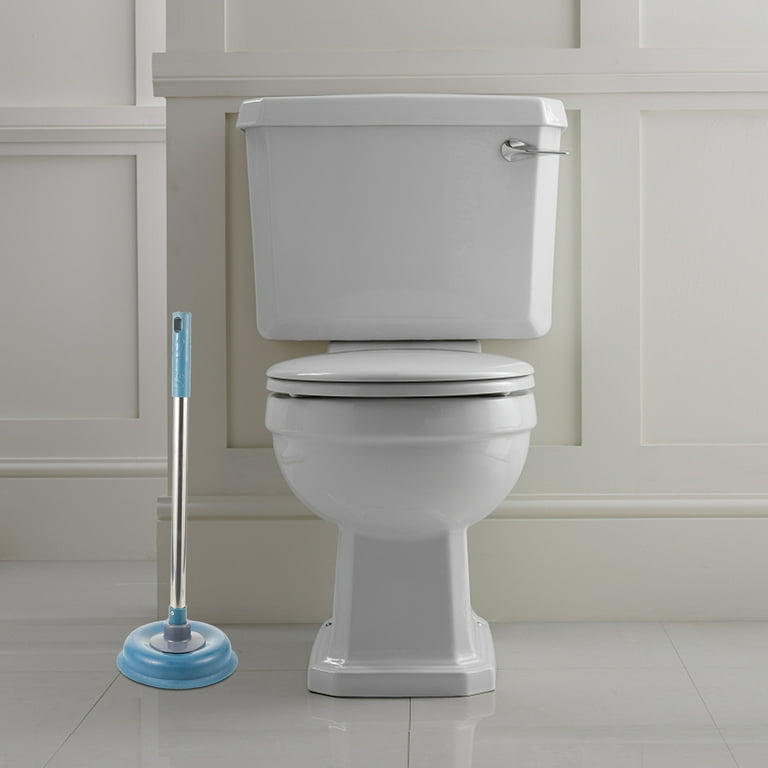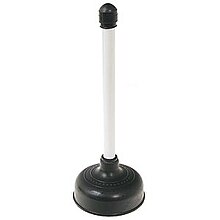Tips to Properly Apply Plunger and Drain Cleaners: Expert Tips
Tips to Properly Apply Plunger and Drain Cleaners: Expert Tips
Blog Article
The writer is making a few great annotation related to Here's How to Correctly Use a Toilet Plunger overall in the content further down.

Intro
Appropriate maintenance of household drains pipes is necessary for stopping blockages and guaranteeing smooth water circulation. Among the key tools in every homeowner's toolkit is the plunger, along with different drain cleansers created to tackle persistent obstructions efficiently. This write-up checks out exactly how to use plungers and drain cleaners effectively to maintain your drains pipes moving easily.
Section 1: Comprehending Plungers
Types of Plungers
There are several types of bettors readily available, each made for various kinds of drains and obstructs. One of the most common kinds consist of cup plungers, flange bettors, and accordion plungers.
Just How Plungers Job
Plungers work with the principle of creating stress and suction to dislodge obstructions. When correctly used over a drain, they develop a vacuum that can take out debris or separate clogs.
Picking the Right Bettor
Choosing the right bettor depends on the type of drainpipe and the nature of the obstruction. Mug bettors are suitable for sinks and bathtubs, while flange plungers are better matched for commodes because of their design.
Common Blunders with Bettors
Avoiding these mistakes makes certain reliable plunging: inappropriate seal around the drainpipe, insufficient force, and not clearing bordering debris.
Section 2: Using Plungers Efficiently
Prep work
Before plunging, guarantee the bettor covers the drainpipe completely and creates a limited seal. Clear any kind of noticeable particles around the drain opening.
Method
Start with mild plunging activities to develop suction. Increase pressure slowly, utilizing a stable rhythm. Repeat as required till the drain gets rid of.
Fixing Tips
If diving doesn't function, try adjusting the seal, using oil jelly for a much better seal, or using a different sort of plunger.
Area 3: Understanding Drainpipe Cleaning Company
Kinds Of Drainpipe Cleaning Company
Drain cleaners can be chemical or chemical. Chemical cleansers use strong chemicals to liquify obstructions, while enzymatic cleansers utilize natural enzymes to break down organic matter.
How Drain Cleaning Company Job
Chemical cleansers react with clogs to liquify them, while enzymatic cleaners break down organic products like hair and oil without hurting pipes.
Safety and security Factors to consider
Constantly use handwear covers and eye security when utilizing chemical drainpipe cleansers. Ensure sufficient air flow and adhere to producer directions very carefully.
Eco-Friendly Alternatives
Take into consideration making use of vinegar and cooking soda or enzyme-based cleansers for eco-friendly options that are more secure for pipes and the setting.
Section 4: Using Drainpipe Cleaners Effectively
Application Methods
Pour chemical cleaners straight into the drainpipe opening. Allow them to help the advised time before purging with warm water. Enzymatic cleansers need to sit overnight.
Preventative measures
Avoid mixing various sorts of cleaners, as this can produce hazardous fumes. Never ever make use of chemical cleaners in conjunction with a plunger, as splashing can take place.
Dealing With Persistent Clogs
For persistent clogs, consider making use of a pipes serpent or calling an expert plumbing technician to avoid damage to pipes.
Verdict
Finally, comprehending exactly how to use bettors and drainpipe cleaners properly is crucial for preserving healthy pipes systems. By selecting the right devices and techniques, house owners can take on small clogs and prevent major pipes issues down the line.
How To Properly Use A Plumbing Snake To Clear Drains
When any drain clogs in our home arise, we tend to gravitate toward the plunger and little else. In cases where the plunger and its vacuum-created pressure are not able to clear clogs, many immediately move to harmful chemicals or simply call their plumber to fix the issue.
we’re happy to help with all drain cleaning needs and concerns. This includes informing you on a few other home remedies you may have at your disposal for minor to moderate clogs, one of which is the use of a plumbing snake. Many people have never used one of these before – let’s go over the steps to take when your drain clogs and you have a plumbing snake available.
Attempt Plunger Use
The first step here, as we noted above, should indeed be to grab your plunger when you notice a drain clog and attempt to resolve it this way. If you’re unsure how to use a particular type of plunger, our plumbers can answer any questions you have. If this doesn’t do the trick, however, you move on to the snake.
Locate And Prepare Snake
A plumbing snake is a metal or plastic device that’s generally about a quarter of an inch thick. It’s design with significant extensions, meant to reach down into your clogged drain and push the clog out. Snakes also contain drain augers that will latch onto and push stubborn blockages.
If your plunger doesn’t clear a clog, locate your snake and bring it to the drain in question. We also recommend keeping a bucket nearby to collect the clog once you pull it out, plus we’d advise wearing goggles and possibly protective gloves.
Feed Snake
Once you’re ready to go, feed the snake slowly down the drain, using the crank device it comes with to keep it moving until it finds the clog. Once this happens, much of the clog will be latched onto the coil so you can pull it out, while the rest will simply break up and flow downward.
Detach Debris
Remove the snake slowly from the drain, and once you’ve done so, pick off any debris that’s stuck to the coil. This is another area where wearing gloves is a must.
Flush Drain
Finally, take a few minutes to ensure the snake has done its job correctly. If you’ve been using it on a toilet, flush the toilet a couple times and make sure everything flows well. If you’ve used it on a different drain, flush it with some room temperature water.
https://www.mybuddytheplumber.com/blog/how-to-properly-use-a-plumbing-snake-to-clear-drains/

Application Methods
Pour chemical cleaners straight into the drainpipe opening. Allow them to help the advised time before purging with warm water. Enzymatic cleansers need to sit overnight.
Preventative measures
Avoid mixing various sorts of cleaners, as this can produce hazardous fumes. Never ever make use of chemical cleaners in conjunction with a plunger, as splashing can take place.
Dealing With Persistent Clogs
For persistent clogs, consider making use of a pipes serpent or calling an expert plumbing technician to avoid damage to pipes.
Verdict
Finally, comprehending exactly how to use bettors and drainpipe cleaners properly is crucial for preserving healthy pipes systems. By selecting the right devices and techniques, house owners can take on small clogs and prevent major pipes issues down the line.
How To Properly Use A Plumbing Snake To Clear Drains
When any drain clogs in our home arise, we tend to gravitate toward the plunger and little else. In cases where the plunger and its vacuum-created pressure are not able to clear clogs, many immediately move to harmful chemicals or simply call their plumber to fix the issue.
we’re happy to help with all drain cleaning needs and concerns. This includes informing you on a few other home remedies you may have at your disposal for minor to moderate clogs, one of which is the use of a plumbing snake. Many people have never used one of these before – let’s go over the steps to take when your drain clogs and you have a plumbing snake available.
Attempt Plunger Use
The first step here, as we noted above, should indeed be to grab your plunger when you notice a drain clog and attempt to resolve it this way. If you’re unsure how to use a particular type of plunger, our plumbers can answer any questions you have. If this doesn’t do the trick, however, you move on to the snake.
Locate And Prepare Snake
A plumbing snake is a metal or plastic device that’s generally about a quarter of an inch thick. It’s design with significant extensions, meant to reach down into your clogged drain and push the clog out. Snakes also contain drain augers that will latch onto and push stubborn blockages.
If your plunger doesn’t clear a clog, locate your snake and bring it to the drain in question. We also recommend keeping a bucket nearby to collect the clog once you pull it out, plus we’d advise wearing goggles and possibly protective gloves.
Feed Snake
Once you’re ready to go, feed the snake slowly down the drain, using the crank device it comes with to keep it moving until it finds the clog. Once this happens, much of the clog will be latched onto the coil so you can pull it out, while the rest will simply break up and flow downward.
Detach Debris
Remove the snake slowly from the drain, and once you’ve done so, pick off any debris that’s stuck to the coil. This is another area where wearing gloves is a must.
Flush Drain
Finally, take a few minutes to ensure the snake has done its job correctly. If you’ve been using it on a toilet, flush the toilet a couple times and make sure everything flows well. If you’ve used it on a different drain, flush it with some room temperature water.
https://www.mybuddytheplumber.com/blog/how-to-properly-use-a-plumbing-snake-to-clear-drains/

We are very fascinated by Here's How to Correctly Use a Toilet Plunger and I am praying you liked the entire piece. Are you aware of another person who is interested by ? Please feel free to share it. Thank you for your time invested reading it.
Request An Estimate Report this page